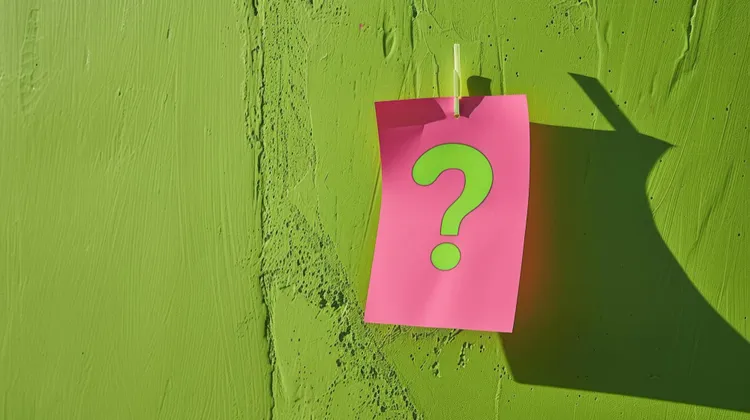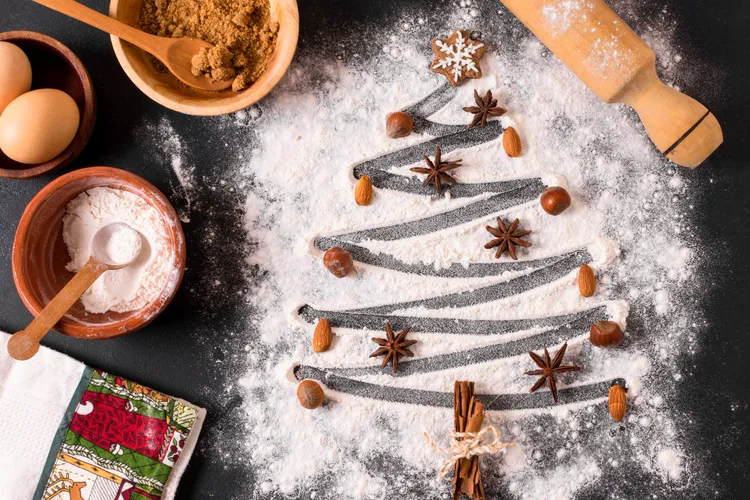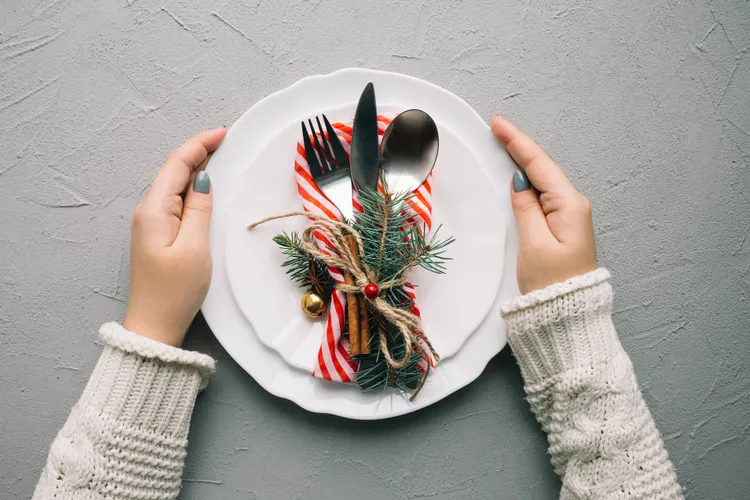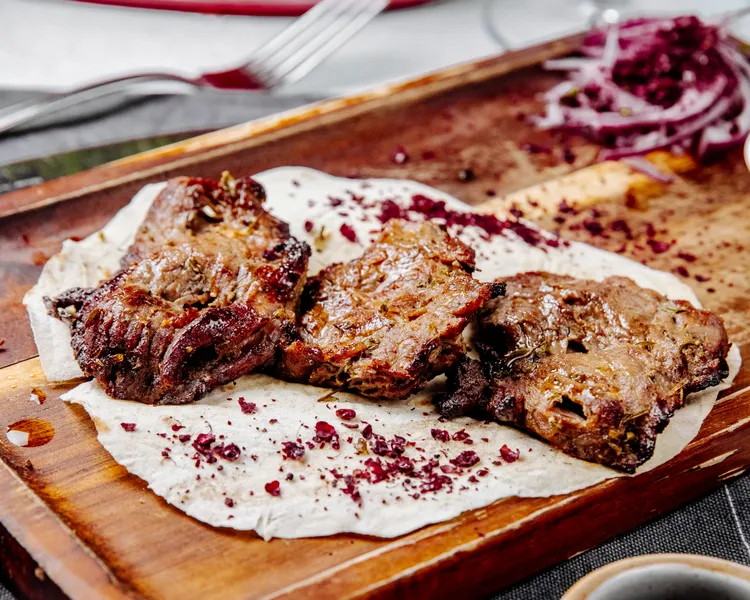50 Food Facts You Probably Don’t Know (But Should!)
We eat food every day - but how much do we really know about what’s on our plates? From mind-blowing historical origins to nutritional oddities, the world of food is full of weird, fascinating, and downright shocking facts. Whether you're a foodie, a trivia buff, or just love learning something new, these food facts you probably don’t know will surprise and delight you.

Vegetables & Fruits
- Bananas are berries - but strawberries aren't.
Botanically speaking, bananas qualify as berries, but strawberries do not. Go figure! - Broccoli contains more protein than steak (gram for gram).
While it’s not as calorie-dense, broccoli packs a surprising protein punch per calorie. - Carrots were originally purple.
Orange carrots were cultivated in the Netherlands in the 17th century as a tribute to the House of Orange. - Tomatoes were once thought to be poisonous.
In 18th-century Europe, many avoided tomatoes due to their relation to the deadly nightshade plant. - Apples float because they’re 25% air.
That's why they’re perfect for bobbing at Halloween parties! - Pineapples take up to two years to grow.
Each pineapple plant produces only one fruit every 18-24 months. - Avocados never ripen on the tree.
They only start softening after being picked. - A single cup of cooked spinach has more potassium than a banana.
Popeye was really onto something. - Cranberries bounce when they're ripe.
Farmers once used bounce tests to check freshness! - Peppers can be male or female.
Some say the number of lobes tells you the "gender" (3 = male, 4 = female), though that's more myth than fact.
Dairy & Eggs
- Milk from camels doesn’t curdle easily.
That’s why it’s tough to make cheese from camel’s milk. - Some cheeses are illegal in the U.S.
Casu marzu, a Sardinian cheese containing live maggots, is banned in many countries. - The color of egg yolks varies with the hen’s diet.
Bright orange yolks usually mean the hen ate marigold petals, peppers, or greens. - Humans are the only species to drink another animal’s milk into adulthood.
Strange, right? - Cheddar cheese isn’t naturally orange.
It’s dyed with annatto, a seed from the achiote tree, for tradition.
Meat & Protein
- Spam is short for “Spiced Ham.”
It was invented in 1937 and became wildly popular during WWII. - Chicken nuggets were invented by a food scientist named Robert C. Baker.
Not McDonald’s - they just made them famous. - Kobe beef must come from a very specific breed of cattle.
Real Kobe beef comes from Tajima cattle raised in Hyogo Prefecture, Japan. - Fish and seafood are often mislabeled.
Studies have shown that up to 1 in 3 fish sold in the U.S. are not what the label says they are. - Lobsters were once fed to prisoners.
In colonial America, lobster was considered “poor man’s food.”
Grains, Breads & Carbs
- Sourdough is the oldest form of leavened bread.
It dates back to ancient Egypt over 4,000 years ago. - White bread was once a status symbol.
In medieval times, white bread was reserved for the rich because it required more processing. - Rice is the staple food for over half the world’s population.
It’s grown on every continent except Antarctica. - Popcorn was found in 1,000-year-old caves in New Mexico.
And yes - it was still poppable! - Bagels were originally given as gifts to women in childbirth.
The ring shape was symbolic of the cycle of life.
Sweets, Snacks & Desserts
- White chocolate isn’t technically chocolate.
It contains cocoa butter, but no cocoa solids. - M&Ms were originally made for soldiers.
Their hard candy shell prevented melting in hot conditions. - Cotton candy was invented by a dentist.
Dr. William Morrison co-invented the sugary treat in 1897. - Honey never spoils.
Archaeologists found pots of edible honey in ancient Egyptian tombs. - Gummy bears are made with gelatin - which comes from animal bones.
Sorry, vegans.
Drinks
- Coffee was discovered by goats.
Legend says Ethiopian shepherds noticed their goats were energized after eating coffee cherries. - Decaf coffee still contains caffeine.
It’s just significantly reduced - not removed entirely. - Tea is the most consumed beverage in the world (after water).
Over 2 billion people drink it daily. - The bubbles in sparkling water don’t just add fizz - they change the flavor.
Carbonation makes drinks taste slightly more acidic. - Orange juice is often "reflavored" before bottling.
Stored juice loses its taste, so manufacturers add "flavor packs."
Cultural & Historical Food Facts
- Ketchup was once sold as medicine.
In the 1830s, it was marketed as a cure for indigestion. - Chocolate was once used as currency.
The ancient Aztecs prized cacao beans so highly, they used them to pay taxes. - Nutmeg was worth more than gold in the 1600s.
Wars were even fought over it during the spice trade era. - The world’s most expensive pizza costs over $10,000.
Topped with caviar, truffles, and 24k gold flakes, it’s only for the elite. - Chopsticks were originally cooking tools.
They became dining utensils around 400 AD in China.
Weird, Wild & Wonderful
- Peanut butter can turn into diamonds under high pressure.
Scientists have literally squeezed peanut butter into diamond form in labs. - There’s a fruit that tastes like chocolate pudding.
It’s called black sapote - aka “chocolate pudding fruit.” - You can eat an entire pineapple - including the core and skin.
Just blend it into juice or cook it thoroughly (but it's not recommended). - Almonds are seeds, not true nuts.
They’re technically the seed of the fruit from the almond tree. - Jelly beans are coated in shellac - made from insect secretions.
That shiny shell comes from the lac beetle. - Some mushrooms glow in the dark.
Over 80 species of fungi are bioluminescent! - Watermelons are technically both a fruit and a vegetable.
They belong to the cucumber family and grow from a flower like other fruits. - The average ear of corn has exactly 800 kernels in 16 rows.
Test it next time - it’s surprisingly consistent. - One fast-food burger can contain meat from 100 different cows.
Industrial meat processing blends cuts from many animals into one patty. - Potatoes were the first vegetable grown in space.
NASA partnered with the University of Wisconsin to grow spuds on the Shuttle Columbia in 1995.
Food is so much more than fuel - it’s science, history, culture, and art all wrapped into one delicious package. Next time you bite into a banana or sip a coffee, you might just remember how weirdly wonderful the world of food really is.
Latest
Learning to Say No to Extra Dishes
22 Dec 2025
How to Fix Dry Meat or Overcooked Food
20 Dec 2025
Secrets to Perfectly Crispy Roast Vegetables
20 Dec 2025
How to Sear Meat Like a Professional
20 Dec 2025









